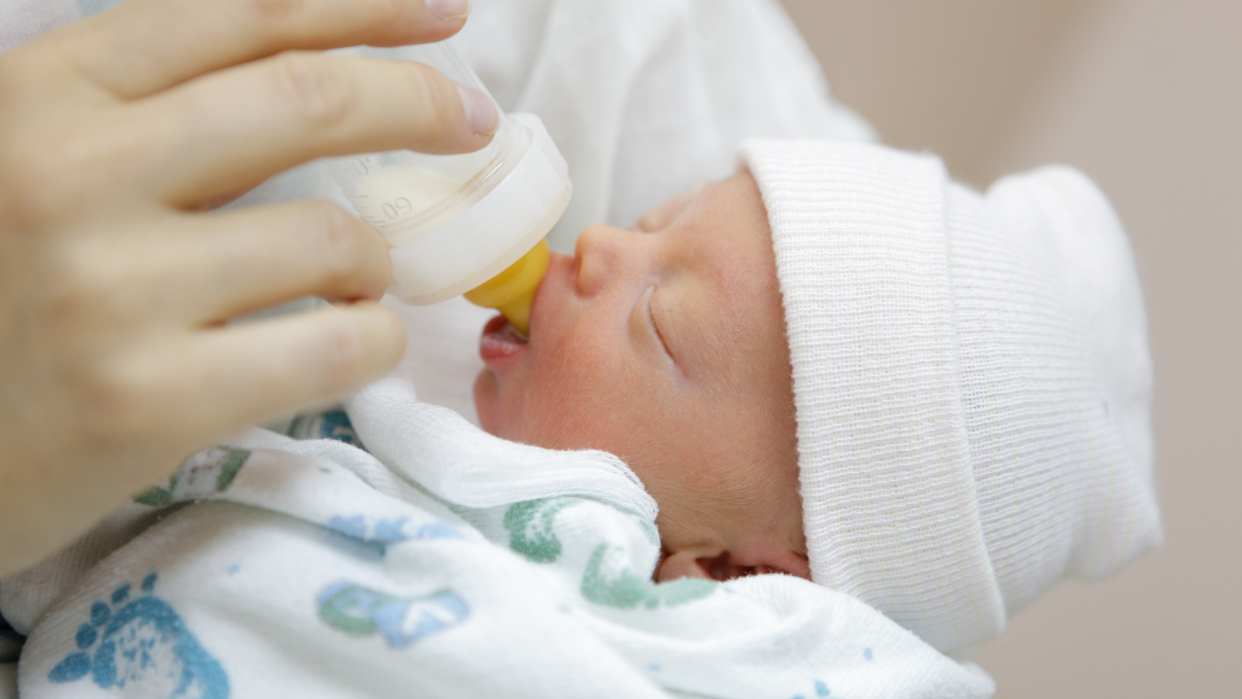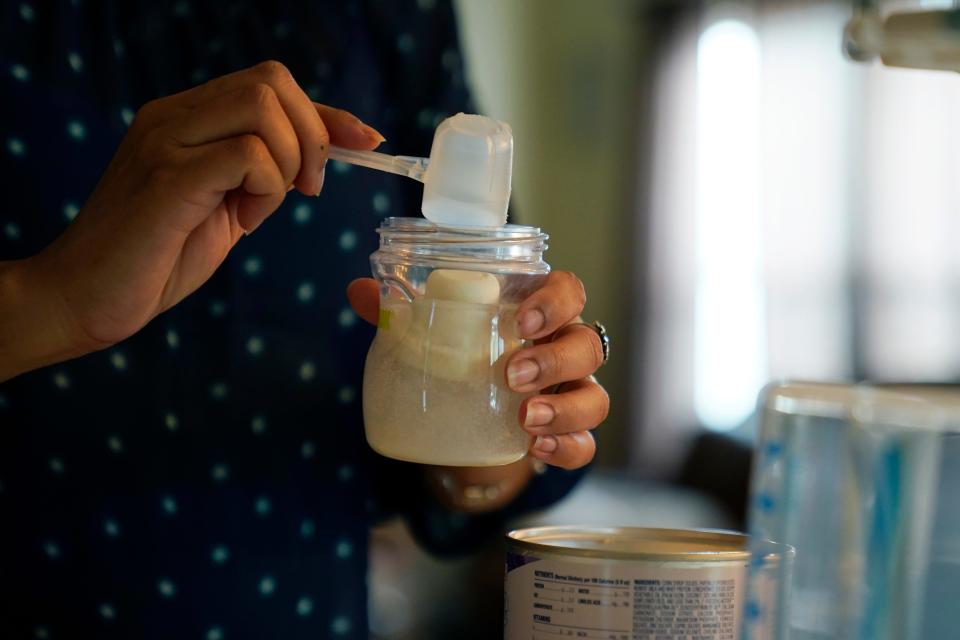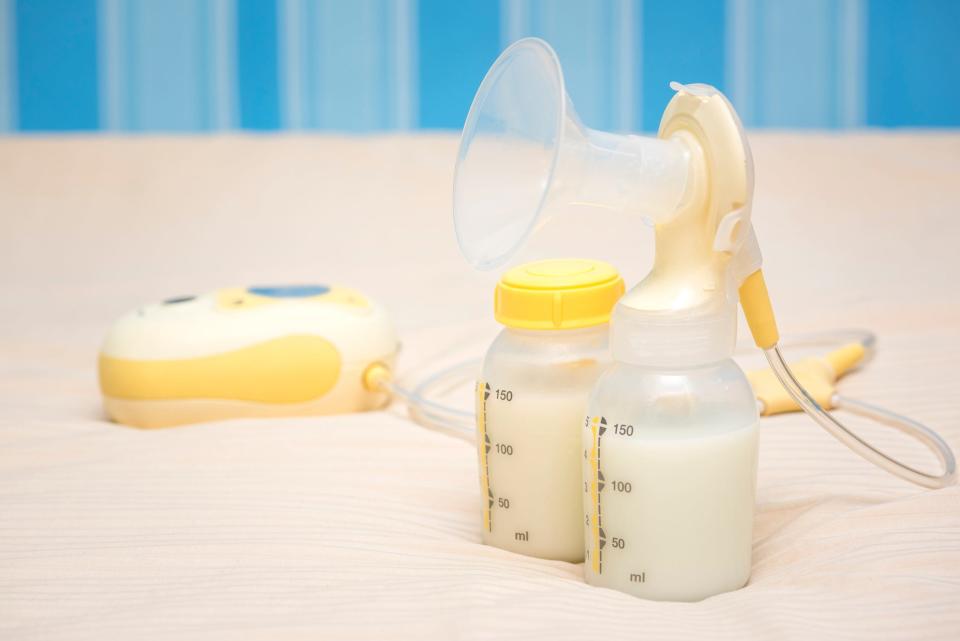Safely feed babies, keep bottles and breast pumps clean to avoid deadly Cronobacter germ

Last year, certain infant formula was impossible to find after the production line was shut down because of the germ Cronobacter sakazakii. This spring, the Centers for Disease Control and Prevention issued a warning for Cronobacter not just in formula but also in breast milk.
This happened after a premature baby died last year from a Cronobacter infection linked to his mother's breast pump parts.
The CDC noted that two to four cases are reported each year, but that might not reflect the true number of cases. Hospitals, laboratories and public health departments are not required to report cases of the bacteria to the CDC.
What is the Cronobacter germ?
It's a very common bacteria that is found everywhere said Donna Cordoba, a registered nurse and a certified lactation consultant at St. David's South Austin Medical Center. It's found on surfaces but can also live in dried food such as powdered formula, powdered milk, starches and herbal tea, according to the CDC.
"It's mostly harmless to most people," Cordoba said.
Read more: 'A fighter': Baby born at 23 weeks one of most premature Austin hospital has seen
Which infants are most at risk for serious symptoms?
All infants in the first two months of life are at risk.
After two months, Cronobacter is still a concern for infants:
Born prematurely.
With a compromised immune system because of an illness or medical treatment such as chemotherapy.
For a baby to get sick from the germ is rare, Cordoba said, but "if you're that one person, no matter how rare it is, it isn't rare anymore."

How does Cronobacter get into breast milk or formula?
It is not in the mother's breast milk, Cordoba said. It's a case of cross-contamination when breast milk is pumped and then given to a baby in a bottle. In the case last year, in which it was found on the breast pump parts, they might have been placed on a contaminated surface and not cleaned properly before a mother pumped and brought the germ onto the surface of the bottle or into the milk, the CDC found.
In the case of formula-fed babies, last year Cronobacter was found in the formula during manufacturing, but it could appear if a bottle or the nipple is placed on a contaminated surface.
"Powdered formula is not sterile and might have germs in it," the CDC warned.
Learn more: Here's how Central Texas parents can navigate the baby formula shortage
What symptoms does Cronobacter cause?
Cronobacter infections usually start as a fever, and the baby doesn't want to eat, is crying or has no energy. Babies also can have jaundice, abnormal body movements, grunting breaths or seizures.
Cronobacter causes a blood infection, also known as sepsis. That then infects the lining of the brain and the spinal cord, causing meningitis. Death can then happen.
The treatment is hospitalization and antibiotics.
Parent support: Hand to Hold, Dell Children's partnership supports more families with babies in the NICU
How can you keep your baby from getting sick?
Clean surfaces of your house regularly or wherever you might pump breast milk or prepare formula. Make sure all of your bottle and pump parts are cleaned properly.
Wash your hands, especially before touching your baby's mouth or anything that goes into your baby's mouth.
Wash your hands after using the bathroom or changing diapers. Soap and water are best.

How should you clean breast pump parts, bottles and pacifiers?
The easiest thing is to throw them in the dishwasher. You can also buy sterilizer bags for the microwave that work or portable sterilizer devices.
If you're going to hand-wash these items, do it with hot water and liquid dish soap that is not antibacterial. Antibacterial soaps have chemicals that are not recommended for infants.
Rinse everything thoroughly and dry fully before you use the items.
Place items in boiling water for five minutes, but be careful of plastic melting.
Clean breast pump switches and dials with disinfectant wipes. Rinse parts that came in contact with milk, such as the tubes, with running water and make sure they are dry.
The breast pump parts should be cleaned and properly dried at least once every 24 hours.
If you have a lactation room at work, ask for a microwave, a sink or a sterilizing machine to clean pump parts as well as a refrigerator for milk storage.
How should you properly pump and prepare breast milk?
Wash your hands before pumping.
Store milk in clean plastic bags made for breast milk or clean food-grade containers with tight-fitting lids.
Store at amounts you think your baby will use in one feeding to avoid wasting milk.
Clearly label containers with the date the milk was expressed.
Fresh breast milk can stay at room temperature for four hours, in the refrigerator for up to four days or in a freezer for six months. Do not store milk in the refrigerator or freezer door because of too many temperature changes. It can also be stored in a cooler with frozen packs up to 24 hours.
If milk has been thawed from frozen breast milk, it can stay at room temperature for one to two hours. It can stay in the refrigerator for one day. Never refreeze.
If your baby didn't drink everything, you have to toss the leftover breast milk after two hours.
Thaw breast milk by leaving it in the refrigerator overnight, in a container of warm water or under lukewarm running water. Do not use a microwave or stove. It can destroy the nutrients and burn a baby's mouth.
Breast milk does not need warming. If you do warm it, place the sealed container in a bowl of warm water.
How should you properly prepare formula?
Powdered formula should be stored in a dry place in its original container. Avoid getting the scoop wet.
Wash your hands before preparing.
Powdered formula has to be prepared with water heated to at least 158 degrees Fahrenheit to kill the Cronobacter germs.
Boil the water, and then let it cool for about five minutes.
Pour the water in a clean bottle, and add the formula. Put the nipple and cap on, and shake to mix the formula.
Run cool water over the bottle to bring to room temperature. Then test the formula by putting some drops on your wrist. It should be warm, not hot.
Prepared formula should be given within an hour. After two hours, it has to be thrown away.
You can store prepared formula in the refrigerator for one day.
To donate breast milk
Contact Mothers' Milk Bank at Austin, milkbank.org, 512-494-0800.
This article originally appeared on Austin American-Statesman: Breastfeed, bottle feed babies safely to avoid deadly Cronobacter germ

